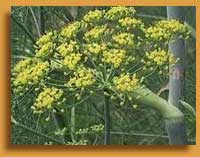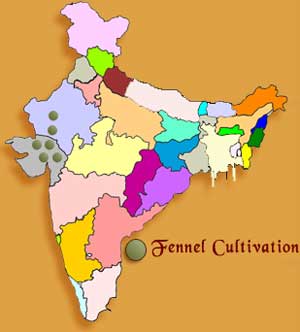FENNEL
Introduction
Fennel is crispy and somewhat sugary, adding an uplifting contribution to the increasingly popular Mediterranean cuisine. Most often linked with Italian cuisine, be clear in your mind to put in this to your assortment of fresh vegetables from the autumn through the premature spring when it is readily obtainable and is at its greatest form. Fennel has a characteristic odor somewhat like Aniseed. The roots are big, fat and pasty and are carrot shaped. The root creates a heavy, condensed, delicately ribbed shoot with fine bush stripes. The leaves are dissected into plentiful filiform segments, the older leaves on broad sheaths that enclose the stem.
The dazzling golden flowers, shaped in bulky, smooth terminal umbels, within from thirteen to twenty emission, are in flourishing mode in July and August. The yellow flowers bloom from July to October. The fruit consists of two connected carpels, jointly taking an oblong appearance with outstanding ribs. Fennel looks like a dill with its spine leaves and yellow umbel flowers and hollow stems and they have the scent of anise, or licorice.
Common Names
Foeniculum vulgare Miller is the biological scientific name of Fennel. In India it is known by different names in different languages. In Hindi it is called as Saunf, sonp; in Bengali as Pan, Muhiri, Mauri; in Gujarati as Variari; in Kannada as Badi-sopu; in Malayalam as Perum jeerakam; in Marathi as Badishep; in Punjabi as Saunf; in Sanskrit : Madhurika; in Tamil as Sombu; in Telugu as Sopu or Pedda-jilakara.
History

Fennel was also given as an award to Pheidippides, the runner who reported the news of the Persian attack to Sparta. Greek mythology also embraces that acquaintance was delivered to man by the gods at Olympus in a fennel stalk packed with coal. Fennel was respected by the Greeks and the Romans for its medicinal and culinary applications. Fennel has been cultivated all over Europe, especially in areas neighboring the Mediterranean Sea, and the Near East since ancient times. Today, the United States, France, India and Russia are amongst the foremost cultivators of fennel.
Habitat

It has followed society, particularly where Italians have occupied, and also found growing untamed in many parts of the world upon dehydrated soil near the sea-coast and upon riverbanks. It superfluities mainly on limestone soil.
Uses
Cooking

Medicine
The leaves or seed, boiled in Barley-water, and drunk, are excellent for the nursing mother. Fennel is used to break flatulence, rouse urine, and eases the pain caused by stone and helps break it. The leaves, or fairly the seeds, boiled in water, helps to get rid of hiccups, cough and soothes the stomach of sick and feverish persons. The seed boiled in wine is good for those who have taken in poisonous herbs or mushrooms. The seed, or roots, assist to unwrap stumbling block of the liver, spleen and gall, and from pain and swelling and helps the yellow jaundice, the gout and cramps.

Latest studies have found fennel to possess diuretic, choleric, and pain-reducing, fever-reducing, and anti-microbial in nature. The fennel tea conventionally made was a good eyewash. It is an accepted medicine for gas, acid stomach, gout, cramps, colic and spasms. Fennel oil was conventionally rubbed over painful joints to reduce pain. It was gargled for roughness and painful throat. Fennel water has characteristics comparable to those of anise and dill water. When assorted with sodium bicarbonate and syrup, these waters make up the domestic 'Gripe Water,' used to reduce the flatulence of infants.
Fennel Cultivation in India

